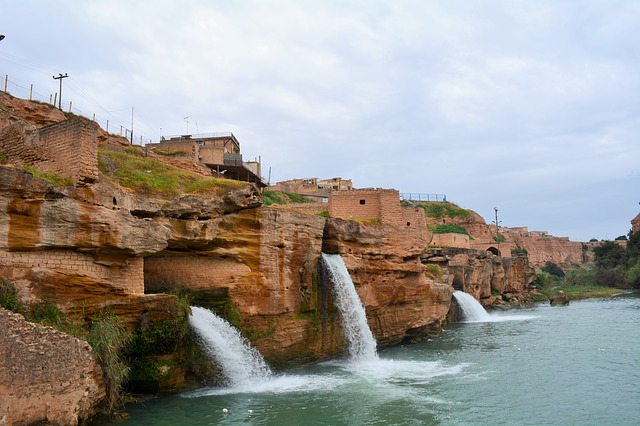My Water Footprint
Beyond filling my water bottle, my amount of water consumption doesn’t enter my mind very often, and my 32oz water bottle, even if refilled once or twice, is near negligible in my total daily footprint.
My water consumption comes in at around 1,007 gallons daily, which can be approximated to around 30,630 gallons monthly and 367,555 annually. Daily, my footprint is 795 gallons below the national average of 1,802. I attribute this to the facts that I don’t drive while I’m at Dickinson, only eat meat a few times a week, if that, and am very conscientious of recycling and reuse. Those habits alone differ from the vast majority of Americans. I would, however, guess my exact number is a little higher than the calculations because I consume a decently high amount of liquids over the course of the day, maybe a little less than 60 fl. oz. If that is the case, annually, you can add 165 gallons to my total consumption and 0.45 gallons daily. This, to my relative shock, is lower than a lot of consumption in my region of focus: the Tigris-Euphrates Valley and Anatolia.
Turkey

Turkey, on average, consumes around 1,189 gallons daily per capita. 79% of their consumption is internal, which leaves 21% to external factors. The U.S., in comparison, is only slightly different, with an internal consumption of 80% and an external consumption of 20%. Turkey is notable in the greater MENA region for having a less arid climate and a greater amount of freshwater resources. The Tigris-Euphrates is a very valuable source of water, especially since dams are used. Despite not having particularly high water consumption compared to the U.S., I would say Turkish water security will prove to be somewhat resilient compared to the rest of the region. The numbers prove water infrastructure in Turkey is efficient enough to supply more than enough water to its residents.
Iran

Iran has a water footprint of around 1,347 gallons daily per capita, larger than both my footprint and the Turkish footprint. Iran has a greater amount of internal consumption than the U.S. at 82%, which was quite shocking to me. The state has a decently diverse geography and climate which I would guess aids in its internal sourcing. However, I would also guess median consumption to be smaller than the average per capita consumption considering the concentrated distribution of Iran’s natural water resources in the north.
Syria

The per capita water footprint of Syria is around 1,532 gallons daily, the highest in the region. This was very surprising to me, considering the Civil War has sent the state into a water crisis and much water-related infrastructure has been destroyed in the conflict. However, I noticed he data was from 2011, before the war broke out in 2015, so it is likely this has severely declined in the decade since. The Tigris-Euphrates does run through Syria, which I’m sure contributes to its 84% internal footprint, however.
Iraq
There is no data available for Iraq’s water footprint.
Conclusion
Excluding the fact that much data for this region is outdated and maybe inaccurate, I think a large part of its water consumption, and a key difference between my daily footprint and the region’s per capita daily footprint, is the consumption of meat. Having a meat-based diet as many people in MENA have can very quickly raise levels of water consumption. As the climate crisis exacerbates, water stress in the region, including drought, will similarly be exacerbated. Water footprints will likely lower by necessity, not unlike in the US, where they may lower through choice-based sustainability efforts.
In the future, I believe Iran and Turkey’s geography has led to increased inherent climate resiliency over Iraq and Syria. However, regime-change, initiatives, natural disasters, conflict, and more can very well shift dynamics in the region and with it, levels of resiliency.
The Tigris-Euphrates may be less and less of a valuable source of freshwater as the years go by, and this dwindling shared water source might cause conflict. Internal instability due to human suffering can increase regional instability, climate-related migration, and interstate tensions.
Most climate predictions in the region hinge on unchanging conditions. If more work is done to achieve a greater extent of SDG 16, I think meaningful change in adaptation to or in combat of water scarcity and insecurity can be made.
Georgia Mugisha
November 6, 2023 — 5:43 am
I appreciate noting in the last paragraph that the disastrous future predictions of climate change, around the world and in your region of focus, do not have to become reality if action is taken now. Do you know of any worthwhile action being taken in your region to preserve resources such as the Tigris and the Euphrates?
kopasc
November 7, 2023 — 2:37 pm
Turkey is damming the Tigris-Euphrates, using the rivers as both a water and energy resource, which is a great step, if born from a certain level of necessity. The governments in the other states aren’t paying much attention to resource preservation or conservation, however. Using the Tigris-Euphrates to combat energy and water deficiencies is very resource and infrastructure intensive, so Turkey, with the highest capital in the region, is most equipped to do this effectively. For example, Syrians have turned to the Tigris-Euphrates for water, but since there is little to no water infrastructure to make it safe for consumption, there has been a cholera outbreak. Dams, especially those with hydropower capabilities and expansive networks, are inordinately expensive.